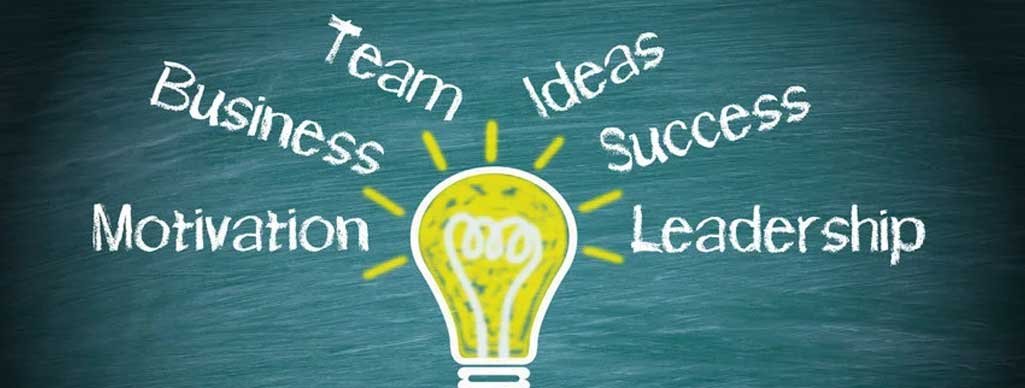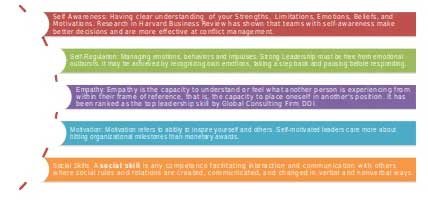
Deepika Soni, IOCL
SONIDEEPIKA@INDIANOIL.IN

Abstract
Intrusion of COVID-19 has marked the beginning of a new Era. It certainly challenged the status quo and long-term vision of the organisations in the entire world together. It exerted a heavy thrust upon organizational virtues like digitalization, preparedness for unforeseen situations, protection of physical and mental health of employees, flexibility in organizational infrastructure & facilities etc. In such a situation, it would not be incorrect to say that employees are the central hub of an organisation. Giant organisations including Indian Oil Corporation Limited could survive the blow because of proactive decision making in various areas and more importantly Human Resources. With COVID-19 receding, life is getting back to normal but revamping modus operandi of human assets is the need of hour. Consequently, development of human assets to take leadership roles in their own periphery is inevitable.
Talent Management Essentials
Management is a wide term and has been defined by many experts over centuries. Some of the notable definitions of management are as follows:
“Management is a multi-purpose organ that manages business and manages managers and manages workers and work.” – Peter Ferdinand Drucker
“Management is a distinct process consisting of activities planning, organising, actuating and controlling performance to determine and accomplish objectives by use of people and other resources.” – George R. Terry
“Management is an art of knowing what you want to do and seeing that it is done in the best possible manner.” – F. W. Taylor
The basic essence of all the definitions of management is to get the work done in a pre-determined way using the tools of management to achieve pre-determined objectives.
Once organisational goals and anticipated business value have been defined, next task for an organization is to put in place an effective and strategic human resource planning to achieve those goals. This is what less precisely known as “Talent Management”. Talent Management is a vague term and experts have varying point of views regarding the functions involved in talent management. Collectively and broadly speaking, Talent Management may include functions such as talent attraction; talent acquisition; performance management; talent retention and talent development. No matter what the definition of talent management is, it must include attributes which are imperative in achievement of organisational goals and anticipated business value. Talent management functions must work to manoeuvre functions of human capital to achieve organisational goals.
Forward Leadership Planning – A desired mandate
Peter F. Drucker, also known as father of modern management, mentioned in his notable contribution – “Management by Objectives” – that employees must be involved in determining objectives. This exerts inclination towards development of leadership qualities and decision making abilities in employees.
As per the study conducted by global consulting firm DDI, organizations having strong leadership talent outperform their competitors by:
- Acting more decisively
- Navigating through complexity with greater efficiency
- Anticipating and reacting to business challenges with ease
It is said that we don’t nurture plants, rather plants nurture us. Also nurturing a plant is not a business of a day or two. It takes years to reap the fruits. In today’s volatile world where happenings of even next moment are unpredictable, the organisational vision must not just include creating the manpower to pluck the fruits but to incite a sense within the human resource to consider planting the trees. Such sense of belonging, willingness to promote sustainable development and motivation to assume the lead role is synonymously know as leadership.
Research shows that 80 percent of organizations consider leadership a high priority, but just 41 percent are ready to meet the demands of finding and developing leadership talent.
Hence, the organisations must work in the direction of leading the human assets and not just managing them. A leadership in true sense will develop future leaders and inculcate a feeling of belongingness within Human Assets which in turn will prepare them for future. In other words, creating a pool of Human resources who not only manage the existing functions but also strive to become leaders in true sense is what a future-proof organisation will contemplate.
Management vs. Leadership
Before moving on the path of creating leaders, understanding the difference between Management and Leadership is vital.
It has been rightly said that “Managers have subordinates — leaders have followers.” – Murray.
Leadership is lifting a person’s vision to high sights, the raising of a person’s performance to a higher standard, the building of a personality beyond its normal limitations. —Peter Drucker
There is some overlap in the functions of Managers and Leaders but essentially both are remarkably different wherein Leadership assimilates a vision towards change. The key differences between both can be understood with following:

- Process Vs. Vision: Role of a Manager is to achieve organizational goals by implementing process such as budgeting, organizational structuring and staffing. Leader is motivated by forward thinking and driving change. Leadership is about developing the appropriate and desirable goals
- Organizing Vs. Aligning: In the book, On Becoming a Leader, scholar Warren Bennis presents a list of key differences between managers and leaders, including:
- The manager administers; the leader innovates
- The manager maintains; the leader develops
- The manager focuses on systems and structure; the leader focuses on people
Managers are focused organizing human resources through coordinated actions and tactical processes, leaders on the other hand are less focused on organizing people and getting the work done and more focused on aligning and influencing them.
Position Vs. Quality: Manager is title and it often denotes a specific role within an organization. Manager has a set of responsibilities. Leadership is a result of actions that inspire, encourage and engage others. It is largely a quality which is shaped gradually by generating self-awareness and motivation to influence.
“Sine-Qua-Non” of Leadership
Leadership is not measured by how-much and how-many tasks have been accomplished, rather it is measured by how-much and how-many people have been influenced. Leadership is reflected when people around a leader thrive. The concept of Leadership is an amalgamation of several virtues which collectively are responsible for effective Leadership.

Emotional Intelligence:
The term was popularized by Psychologist Daniel Goleman. Goleman defined EI as the array of skills and characteristics that drive leadership performance. Emotional Intelligence (EI) is mostly defined as ability to perceive, use, understand, manage and handle emotions. It involves recognizing emotion of self and others and using emotional information to guide thinking and behaviour. It involves adjusting emotions to adapt to environment. Research shows that 90 percent of top performers are high in emotional intelligence. By building your EQ, you can bring out the best in others and cultivate successful teams. Five emotional intelligence skills are as follows:

Employee Engagement:
According to findings by analytics and advisory company Gallup, highly engaged employees tend to:
• Produce substantially better outcomes at work
• Deliver higher-quality service to customers and help attract new ones
• Remain with their organization longer than less-engaged colleagues
• Experience less burnout in their roles
Employee engagement can be achieved in many ways, few of which are enlisted below:
Feedback: Collecting constructive feedback based on observations
Recognition: Showing recognition for achievements and accomplishments of employees by way to tangible and intangible rewards would facilitate better employee engagement.
Transparent Communication: Fostering transparent communication is foundational in developing strong team dynamics and collaboration. Transparent communication shoves a range of negative outcomes such as delay or failure to complete projects, low morale, missed performance goals etc.
Delegation: Delegating important tasks and projects and thereby demonstrating trust over employees and empowering them.
Respect: Being respectful towards employees. According to a report by The Energy Project and the Harvard Business Review, respect has a bigger impact on employees’ sense of safety, trust, and ability to focus than any other leadership behaviour.
Learning & Development: Supporting Learning & development bolster skills and knowledge through professional development and learning opportunities and can pay dividends for both team and company.
Negotiation:
Negotiation is an interaction and process between entities who aspire to agree on matters of mutual interest, while optimizing their individual utilities. Appropriate negotiation skills are desirable in a good Leader. This can be achieved by keeping an open mind, being reasonably transparent during the negotiation, setting and stretching the goals as per need and tolerable limits, turning anxiety into excitement and projecting power and confidence by displaying appropriate body language. Taking a time out or brake and sometimes being silent can pay-off loads.
Decision Making:
Strong decision making is instrumental to business success. However, a recent survey by management consulting firm McKinsey shows that just 20 percent of professionals believe their organizations excel at it. According to Professor Leonard Schlesinger, Harvard Business School decision making should be viewed as a process rather than a single event. Following 8-step decision making process can be employed for effective leadership:

Organisational Change Management:
Organizational change refers to when a company or business alters a significant component of its organization, such as its culture, the underlying technologies or infrastructure it uses to operate, or its internal processes. Managing such change by leveraging that change to bring about a successful resolution is truly called for, and it typically includes three major phases: Preparation, implementation, and follow-through. Change management can be achieved by understanding the process of change, understanding forces of change, creating a plan, communicating the path to be followed and Preparing for roadblocks.
Conclusion
Becoming an effective leader doesn’t happen overnight. By broadening understanding of what leadership and management entail, developing a personal leadership style, and honing skills, one can equip the team for success. Many tools may be employed in the entire journey of leadership such as identifying the existing leadership style by building self-awareness, considering the core function, understanding the motivations, assessing existing professional level, setting goals, engaging in developmental activities etc.
References:
1. A profile of Peter F. Drucker – Father of Modern Management – Toronto School of Management Link: https://www.torontosom.ca/blog/a-profile-of-peter-f-drucker-father-of-modern-management
2. Definition of Management Link: https://www.economicsdiscussion.net/management/definition-of-management/31854
3. How to Become a more effective Leader, E-book, Harvard Business School Link:
https://online.hbs.edu/Documents/How-to-Become-a-More-Effective-Leader.pdf?hsCtaTracking=3c441e6c-aa01-46ff-8786-11e2236022d9%7Ceb269a09-c524-4f81-a88c-97a1cd8e9c10
https://en.wikipedia.org/wiki/Emotional_intelligence#cite_note-hbr98-3
https://en.wikipedia.org/wiki/Empathy
https://en.wikipedia.org/wiki/Social_skills
Posted in Talent Management | No Comments »
Recent Articles
- Role of Leaders in Team Network Interpersonal Skills
- Unlocking the Tapestry of Learning & Development: a Journey through Time & Networks
- Aarohi – As The Flight Leaves The Land
- 20% Time – Innovation through playfulness
- Workplace Culture of Playfulness: Creating an environment of humour and positivity
- We Aren’t Paying Enough Attention to Humor in the Workplace
- Three quotients to manage talent
- Seriously, What’s so Funny?
- Happy Souls at Work: Playfulness Well-being Productivity
- The Joy of Work: Building a Culture Where Playfulness Meets Performance
- Corporate Learnings from ‘Mogambo’ – The Iconic Villain of Indian Film Mr. India
- Talent Development and Succession Planning for Organizational Sustainability
- An Ideal Workplace – Happy & Fun!
- The role of leadership in encouraging a playful environment
- Injecting Joy into Work: The Benefits of a Playful Office Culture
- Five on Five: Five Leadership Styles for Five Generations ACT & LEAD!
- The CEO’s Dharma: Leadership Lessons from Narada’s Inquiry
- 3-D Leader: BANI and Heart Economy
- The Talent Management Odyssey: A Quest for the Holy Grail of HR
- Generation Z in the Workforce: Challenges and Opportunities
- Talent Management in Post-Independent Indian Governance- A Case Study
- Pareto Principle in the Workplace
- Breaking Good: Sabbatical leave- A comprehensive insight
- Prosocial Emotions as Lever for Employee Engagement
- The Table with the lady
- Can Compassion and Executive Presence Co-exist
- Empathetic Organisations are not Built Overnight !
- Employee Excitement
- Women, Leadership and opportunities
- Corporate Diversity & Inclusion
- Connections in the time of Covid
- Developing connect with the missing shift employee
- Becoming the employer of choice in the new normal
- Open Secret to Build a Culture of Sustainability through GHRM (Green Human Resources Management)
- Green HRM: Building a Culture of Sustainability
- Cultural Lens
- Trust Credibility
- Organizational Culture and Covid-19: An employee’s perspective
- Culture: Fostering Values for Unleashing Human Potential
- Psychological safety in a team: Whose responsibility?
- “Dispelling the fear of failure – Nurturing innovation and experimentation”
- Fighting Fear through Growth Mindset & Experimentation
- Situational Leadership: A Brahmastra
- ONGC Succession Planning
- Leadership
- Unleashing the Power of failure and Innovation: A Call to Action for Indians in the 21st Century
- Managing Executive Obsolescence for Career Growth
- Action Learning
- The Best Coach to Rewire people
- The eLearning series: A practitioner’s take
- Learning in the Flow of Work – Lets step up the Game
- E-learning a practitioner’s take- Part 2
- The Forgetting Curve – The best ways of Memorising & Learning
- Leaders as teachers
- The New India – Post Covid
- Learning & Development Gamified
- About Fear, loneliness and Exile at Workplace
- My Journey as a Coach-Leader
- Lessons from Ramayana
- Delivering Happiness through CSR
- Story of positive transformation
- Conquering the fear of failure
- Role of organization culture and values in growth of human potential
- The cost of Failure is…Learning!
- Talent Experience
- CSR Initiatives: The Key Drivers for India’s Sustainable Development Growth
- Gaining Wisdom from the Mahabharata
- Six Thinking Hats – A Decision Making Technique
- Next Normal of Talent Acquisition
- Talent Experience
- Role of Spirituality in effective Human Resource Management
- The ‘next normal’ workplace – A generational perspective
- The Pursuit for Recognition
- How to make Innovation an integral culture of an Organization
- Nuturing Talent – For Organisational Growth
- How Google Sold Its Engineers on Management
- Talent Leadership: Perhaps the new Talent Management
- Words have Power
- The Ultimate Team Game!
- The ‘Feedback Fridays’
- Talent Experience
- Pursuit of Dominance
- How Does Anticipated Emotion from a Decision Outcome Determine Our Ethical Behaviour? A Working Paper
- Talent Management
- From failing to innovating: Role of HR in promoting experimentation
- Unleashing the Power of Talent Management: Lessons from History to Modern Day
- Embracing Evolution: Behavior-Based Hiring and Technological Synergy for Organization’s Future Workforce
- Transforming Workforce Recruitment
- Data-Driven Play: Leveraging Analytics in Gamified Hiring
- Rational Recipe To Recruitment: Future Of Hiring
- Redefining the hiring recipe: Recruiting candidates beyond the resume!
- The Power of Attitude: Why Employers Seek the Right Mindset
- Principles of Recruitment
